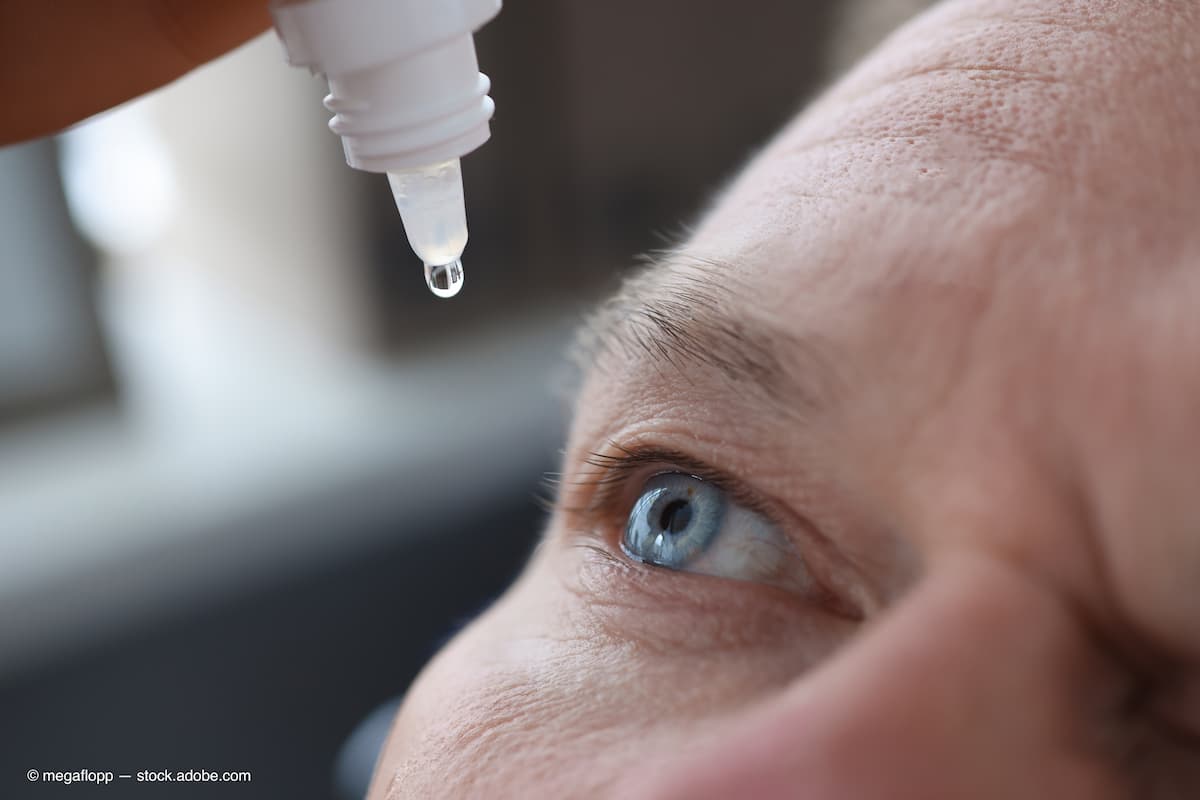First investigational eye drop for front and back of the eye met both primary endpoints in Phase 3 OPTIMIZE Trial
Oculis Holding AG announced, if approved, OCS-01 has the potential to become a new standard of care as the first once-daily, topical, preservative-free corticosteroid for treating inflammation and pain following ocular surgery.
The trial met both hierarchical primary efficacy endpoints, the absence of inflammation at day 15 and the absence of pain at day 4, with robust statistical significance. (Adobe Stock / megaflopp)

Oculis Holding AG announced positive top-line results from its phase 3 OPTIMIZE trial with OCS-01 eye drops, a novel, once-daily, high concentration, preservative-free, topical OPTIREACH formulation of dexamethasone for the treatment of inflammation and pain following ocular surgery.
The company noted in a news release that leveraging Oculis’ proprietary OPTIREACH technology, OCS-01 is a novel, high concentration (15 mg/ml), topical formulation of dexamethasone. The OPTIREACH solubilizing formulation technology addresses the main limitations of conventional eye drops by improving the solubility of lipophilic drugs, increasing the residence time on the eye surface and thereby, enabling less frequent administration for front-of-the-eye and the drug passage from the eye surface to the posterior segment for back-of-the-eye diseases.
The company also noted OPTIMIZE (Once-daily Post-ocular surgery Treatment for InflaMmation and paIn to minimiZE drops) is a double-blind, placebo-controlled Phase 3 trial conducted in 25 sites across the United States with 241 patients randomized 1:1 to receive once daily (QD) OCS-01 eye drop (n=119) or vehicle (n=122) for 14 days following cataract surgery.
Moreover, according to the press release, the trial met both hierarchical primary efficacy endpoints, the absence of inflammation at day 15 and the absence of pain at day 4, with robust statistical significance:
- Inflammation: the percentage of eyes with zero inflammation (absence of anterior chamber cells, score = 0) was statistically significantly greater with OCS-01 QD compared with vehicle at day 15 (OCS-01, 57.2% vs vehicle, 24.0%, p<0.0001).
- Pain: the percentage of eyes with zero pain (absence of pain, score = 0) was statistically significantly greater with OCS-01 QD compared with vehicle at day 4 (OCS-01, 75.5% vs vehicle, 52.0%, p<0.0001).
Furthermore, Oculis announced OCS-01 was well tolerated with a favorable safety profile. Overall, a higher number of ocular treatment emergent adverse events (TEAEs) were reported for the vehicle group (n=84) compared with the OCS-01 QD group (n=37). There was no meaningful difference in intraocular pressure (IOP) between treatment groups with a mean change from baseline to day 15 of -0.90 mmHg in both the OCS-01 group and the vehicle group.
According to the news release, OPTIMIZE results in reduction of inflammation and pain and safety observations were consistent with those observed in the phase 2 SKYGGN trial with once daily administration. In the SKYGGN trial, the same two hierarchical primary efficacy endpoints were also met with robust statistical significance and with similar numerical values.
If approved, OCS-01 has the potential to become a new standard of care and the first once-daily, topical, preservative-free corticosteroid for treating inflammation and pain following ocular surgery.
The Phase 3 OPTIMIZE positive top-line readout with OCS-01 once daily eye drops in inflammation and pain following ocular surgery follows the statistically significant top-line results of OCS-01 from stage 1 of the phase 3 DIAMOND trial in diabetic macular edema (DME) reported earlier this year, further highlighting the product’s potential for treating front- and back-of-the-eye diseases. The results also follow the initiation of the LEOPARD investigator-initiated trial evaluating the potential of OCS-01 for the treatment of cystoid macular edema, one of the most significant causes of vision loss following cataract surgery.
According to Eric Donnenfeld MD, co-chairman of Oculis’ Scientific Advisory Board, the results of the phase 3 OPTIMIZE trial showed once daily OCS-01 to be highly potent in reducing inflammation and pain compared to vehicle with a favorable safety profile.
“This is significant for patients who have undergone cataract surgery, as they currently need to self-administer multiple daily doses of eye drops to alleviate inflammation and pain,” Donnenfeld said in the release.
“The availability of a preservative-free treatment that requires only a once-daily eye drop could greatly benefit a large number of patients who undergo ocular surgeries worldwide.”
Moreover, Riad Sherif MD, CEO of Oculis, said he was pleased with the results of OPTIMIZE.
“A once daily topical steroid eye drop has shown solid results in reduction of inflammation and pain and offers the potential of a truly simplified dosing regimen,” Riad said in the news release.
“We are on track to advance OCS-01 for inflammation and pain following ocular surgery towards an NDA submission with FDA.”
Riad said the company now has positive phase 3 top-line results with OCS-01 preservative-free eye drops in treating front-of-the-eye inflammation and pain following ocular surgery, as well as stage 1 phase 3 results for back-of-the-eye diabetic macular edema (DME) from the DIAMOND program, opening for the first time ever new opportunities for topical eye drops to address highly unmet patient needs in both front- and back-of-the-eye indications.
About inflammation and pain post-ocular surgery
Due to the aging population, lifestyle changes and several other factors, ophthalmic surgical procedures are on the rise and are expected to reach close to 10 million procedures per year in the US alone by 2037, according to a press release. Cataract surgeries are the most prevalent procedures of all medical specialties with an estimated 5.3 million procedures in 2021 for the US alone.
Ophthalmic procedures promote the release of inflammatory factors and can be associated with ocular pain. Cataract surgery, while the incision is very small, creates inflammation in the cornea, anterior chamber, and iris.
Ophthalmologists currently rely on topical steroids to treat ocular inflammation and the full regimen following ocular surgery often includes steroids, antibiotics and NSAID, which can require several drops daily for a post-op patient to self-administer, which may lead to compliance issues.
Newsletter
Want more insights like this? Subscribe to Optometry Times and get clinical pearls and practice tips delivered straight to your inbox.